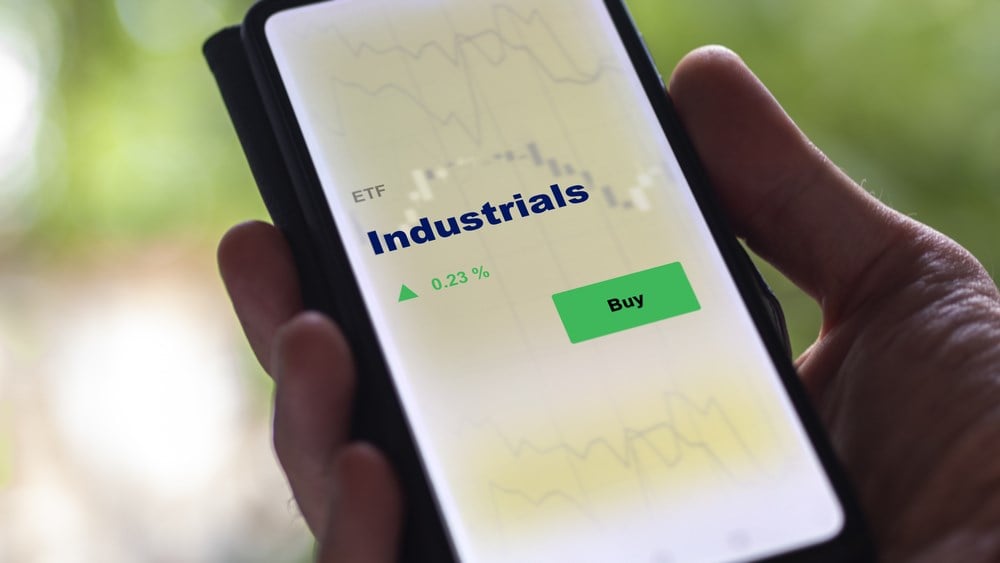
It’s one thing to understand what the S&P 500 is doing, by tracking the SPDR S&P 500 ETF Trust (NYSEARCA: SPY). But drilling down a little more gives you a better indication of market breadth, or lack thereof, as well as what sectors might be poised for rallies or reversals.
For example, the industrials sector, measured by the Industrial Select Sector SPDR Fund (NYSEARCA: XLI) may be a harbinger of trouble ahead.
Industrials have been on a bullish trend recently, advancing 2.77% in the past week. It returned 5.35% the week ended November 3, as the S&P 500 returned 6.61%.
However, the individual components within the industrials sector are showing weakness in their technical trends, with several falling after their earnings reports.
Caterpillar crawling lower
One of the industrial sector’s largest components, Caterpillar Inc. (NYSE: CAT), topped earnings and revenue views in its most recent quarter, but a glimpse of the Caterpillar chart shows buyers haven’t been impressed.
The stock is currently trading below its 200-day moving average, and shares are down 20% from Caterpillar stock’s early August all-time high.
A few things are going on. First, Caterpillar, as well as other industrials, entered earnings season with double-digit one-year gains. That kind of recent performance can be a sign that investors are ready to take some profits off the table, particularly if the one-year mark for long-term capital gains has passed.
Second, with economic red flags dotting the horizon, Caterpillar says its order backlog is down, indicating weakening demand.
Higher borrowing costs are a headwind
Finally, the industrial sector as a whole is facing a wall of higher financing costs.
Companies in the sector involved in manufacturing have to make capital outlays. They regularly pursue capital-intensive projects that require debt financing; many of today’s big projects are in the areas of electric vehicle batteries, hydrogen power and other areas related to clean energy.
With interest rates higher, those projects now cost more.
Fellow manufacturer Rockwell Automation Inc. (NYSE: ROK) is down 2.20% in the past week, following its most recent earnings report.
Rockwell designs and manufactures control systems, software, and services used in various industries to boost industrial productivity and efficiency.
A look at the Rockwell Automation chart shows a stock that’s been trending sharply lower since July.
Rockwell lower despite sales and earnings growth
On the surface, Rockwell doesn’t seem to be doing anything wrong, with revenue growing at double-digit rates in the past three quarters. Net income grew at double-digit rates in the past six quarters.
Analysts expect 7% earnings growth this year and next, but those forecasts were revised lower recently.
With the trend of reshoring, or U.S. companies bringing manufacturing back from overseas, analysts believe Rockwell has the opportunity to supply hardware and software for these new plants.
Another simultaneous trend that could benefit industrial stocks is nearshoring, or bringing manufacturing closer to the U.S.
Either way, there’s likely to be business ahead, but with industrials involved in the production of components for EV batteries, a well-publicized slowdown in EV sales has the potential to hit those industrial sector companies hard.
Even so, the current worries about financing, or simply investor fatigue, still come into play.
Chipmakers warn about industrial customers
Warnings about industrials are coming from other quarters.
When ON Semiconductor Corp. (NASDAQ: ON) reported earnings in late October, the stock gapped down 21.77% after ON issued disappointing guidance, citing sequential declines in some industrial markets.
Fellow chipmaker Lattice Semiconductor Corp. (NASDAQ: LSCC) also gapped down hard after beating revenue views, but saying demand was softening from its industrial and automotive customers.
Is industrials sector a bellwether?
The industrials sector, while admittedly not the most glamorous, can be a signal of economic weakness ahead.
Industrial production is a significant driver of economic growth, and a decline may indicate reduced demand for goods and services, which the companies’ most recent reports are hinting at.
In addition, as the industrial sector is closely linked to manufacturing and transportation, it may be a warning of job losses to come. In addition, the industrial sector is sensitive to changes in interest rates and international trade conditions.
In other words, if business-to-business buyers around the world are slowing their spending because of high interest rates or poor economic conditions, this sector could be a bellwether of more pain ahead.







